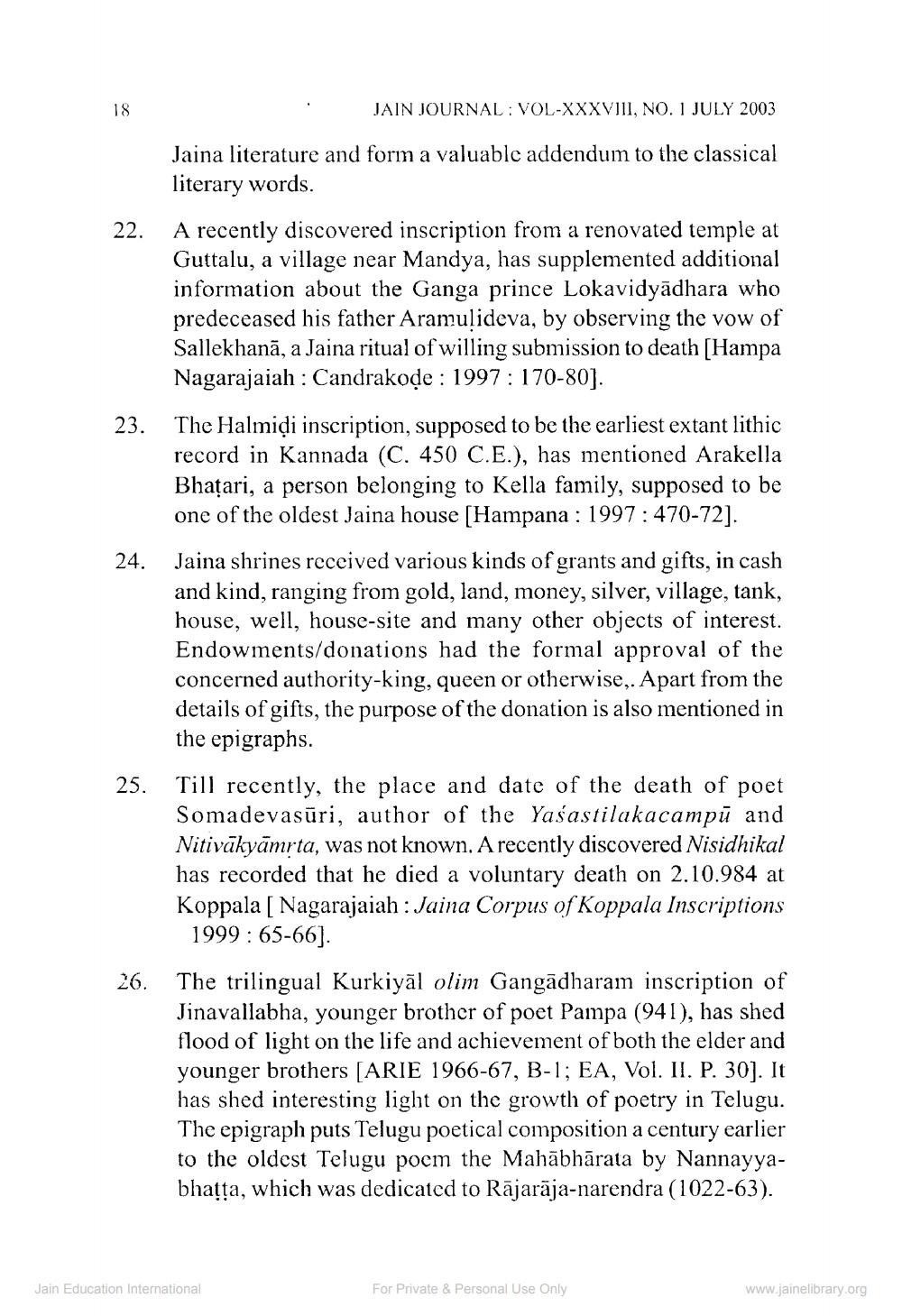________________
18
22.
23.
24.
25.
26.
JAIN JOURNAL VOL-XXXVIII, NO. 1 JULY 2003
Jaina literature and form a valuable addendum to the classical literary words.
A recently discovered inscription from a renovated temple at Guttalu, a village near Mandya, has supplemented additional information about the Ganga prince Lokavidyadhara who predeceased his father Aramulideva, by observing the vow of Sallekhana, a Jaina ritual of willing submission to death [Hampa Nagarajaiah: Candrakoḍde: 1997: 170-80].
The Halmidi inscription, supposed to be the earliest extant lithic record in Kannada (C. 450 C.E.), has mentioned Arakella Bhatari, a person belonging to Kella family, supposed to be one of the oldest Jaina house [Hampana : 1997: 470-72].
Jaina shrines received various kinds of grants and gifts, in cash and kind, ranging from gold, land, money, silver, village, tank, house, well, house-site and many other objects of interest. Endowments/donations had the formal approval of the concerned authority-king, queen or otherwise,. Apart from the details of gifts, the purpose of the donation is also mentioned in the epigraphs.
Till recently, the place and date of the death of poet Somadevasūri, author of the Yasastilakacampū and Nitiväkyämṛta, was not known. A recently discovered Nisidhikal has recorded that he died a voluntary death on 2.10.984 at Koppala [ Nagarajaiah: Jaina Corpus of Koppala Inscriptions 1999: 65-66].
The trilingual Kurkiyal olim Gangadharam inscription of Jinavallabha, younger brother of poet Pampa (941), has shed flood of light on the life and achievement of both the elder and younger brothers [ARIE 1966-67, B-1; EA, Vol. II. P. 30]. It has shed interesting light on the growth of poetry in Telugu. The epigraph puts Telugu poetical composition a century earlier to the oldest Telugu poem the Mahabharata by Nannayyabhatta, which was dedicated to Rājarāja-narendra (1022-63).
Jain Education International
For Private & Personal Use Only
www.jainelibrary.org




